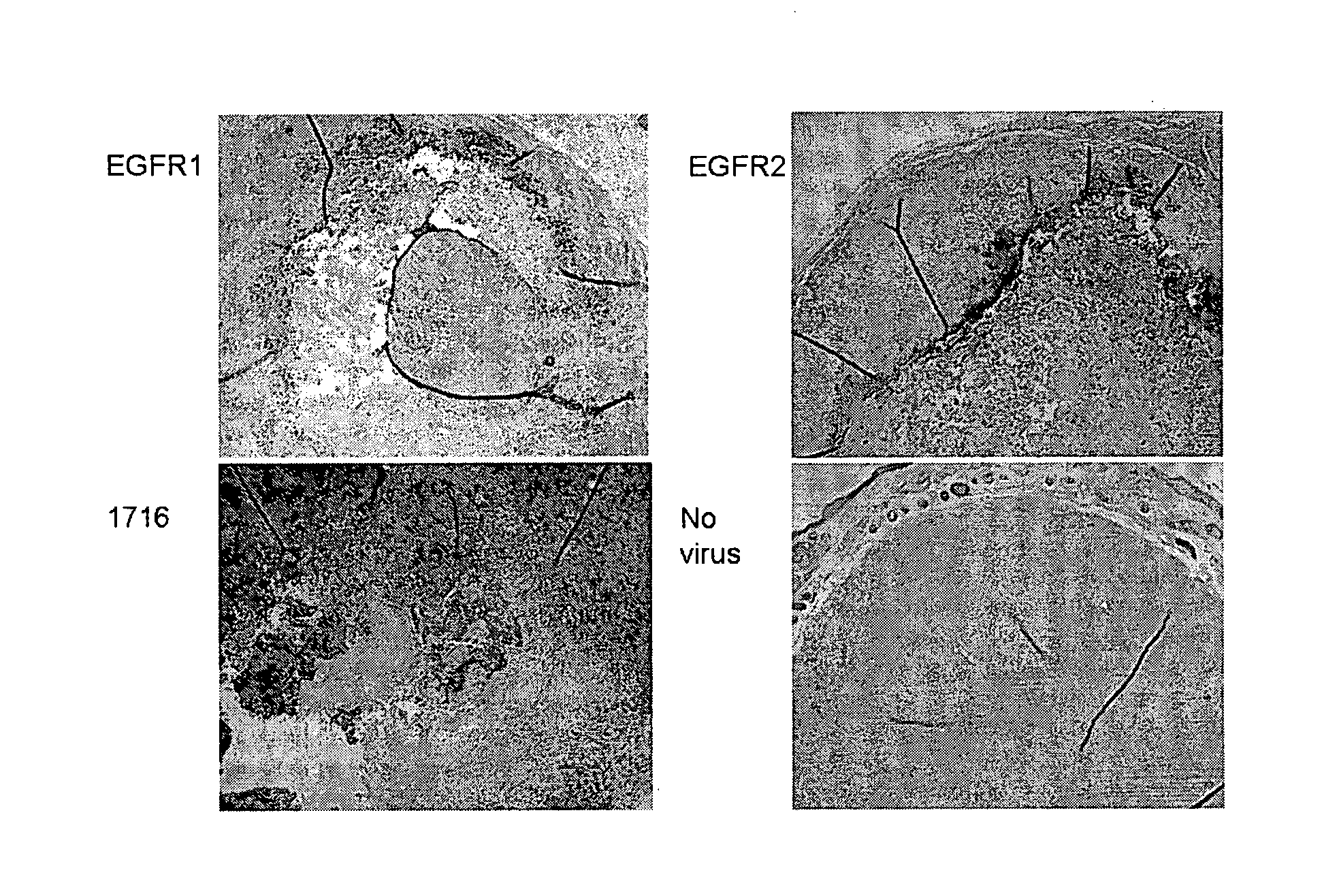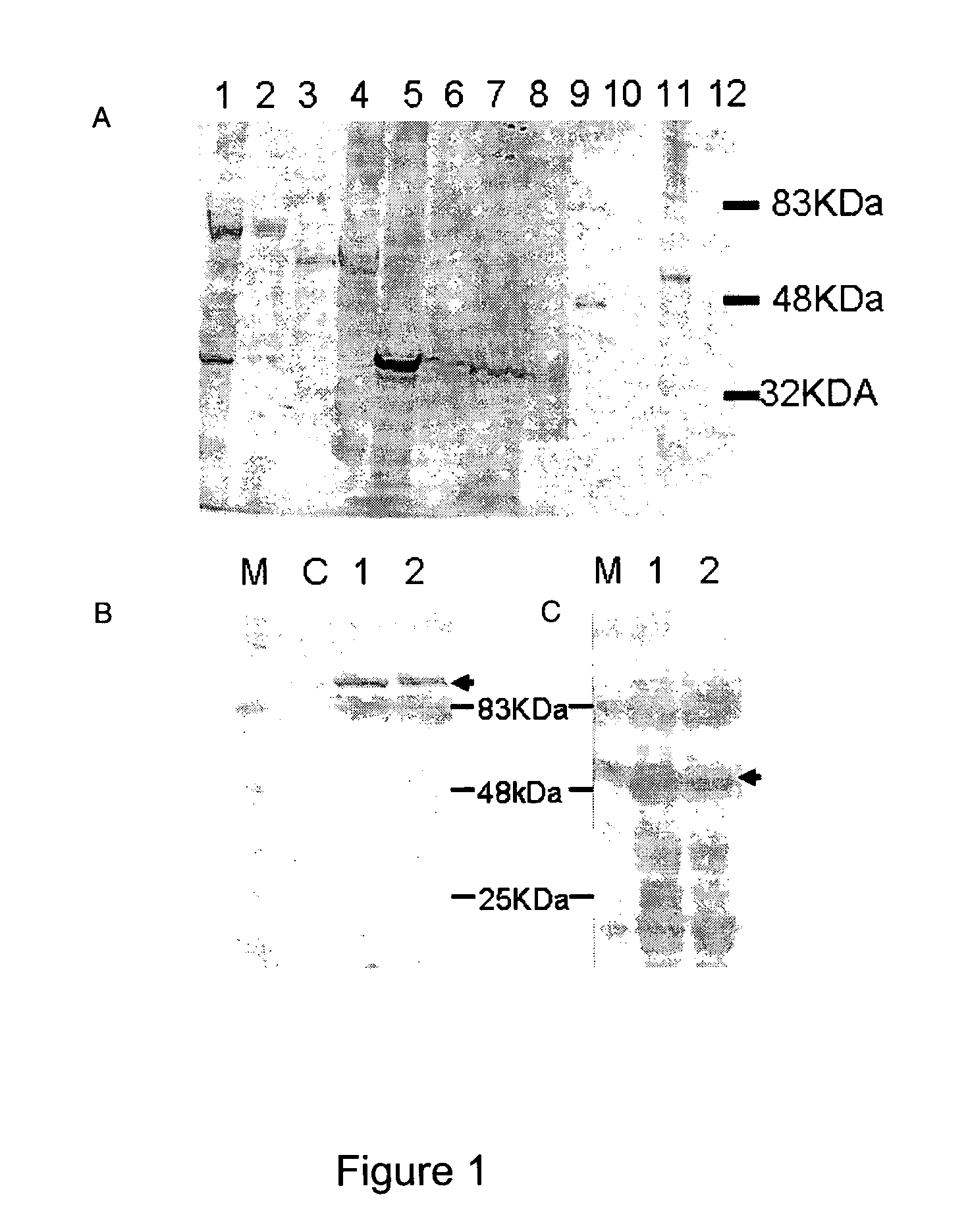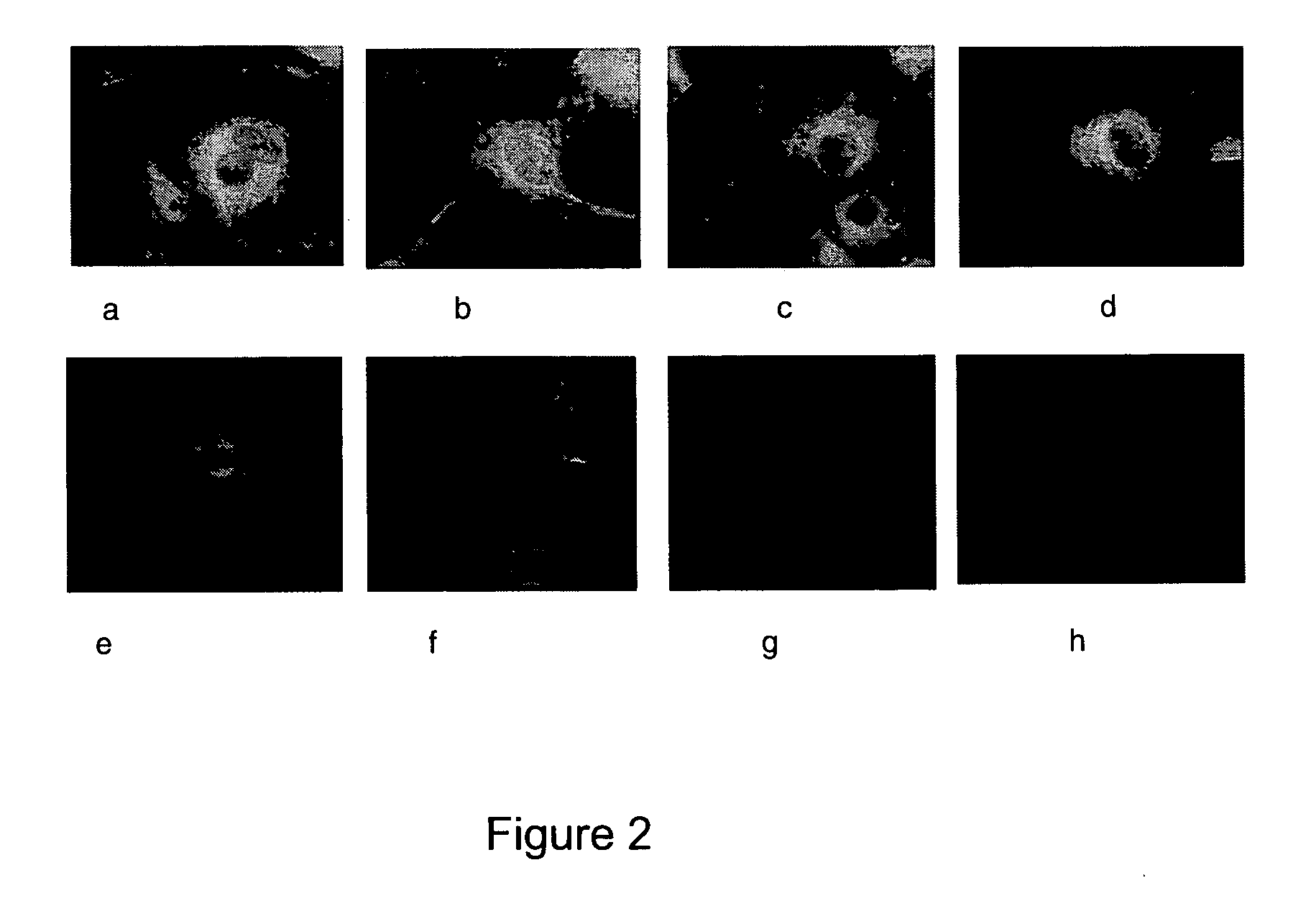[0014]Thus, a redirection of HSV1716
tropism to specific
cell types through the display of
tumour targeting scFv moieties linked to particular glycoproteins and variants thereof identifies an efficient
route for systemic delivery.
[0016]The surprising discovery that N-terminally truncated glycoprotein D molecules linked to a targeting agent are able to efficiently redirect the
tropism of HSV provides a new family of HSVs showing redirected tropism, and opens up a new
route for the development of effective anti-tumour agents.
[0025]The normal
route by which HSV-1 infects a cell requires a complex interplay of a number of cellular and viral membrane components, including the specific interaction of glycoprotein D with HVEM and
nectin-1.
Nectin-1 is thought to be the principal entry
receptor for infection of central and
peripheral nerve cells whereas HVEM expression is more restricted and limited to cells of lymphoid origin. Thus, truncating glycoprotein D such that it does not include a functional HVEM and / or
nectin-1
binding domain will reduce the ability of HSV to infect its normal target. This will increase the specificity of the HSV away from its normal target and towards cells expressing the surface antigens for which the targeting agent linked to the truncated glycoprotein D is specific, e.g. tumour cells.
[0061]In addition to the truncated glycoprotein D molecules of the invention, the HSV may, or may not, also comprise wild-type glycoprotein D, i.e. the full-length glycoprotein D without being linked to a targeting agent. In both cases the HSV will have a reduced affinity for its natural targets, e.g. HVEM and
nectin-1. HSV that does not comprise wild-type glycoprotein D will have a restricted tropism, i.e. the absence of wild-type glycoprotein D means that the
virus will have a reduced affinity, or no specific affinity, for the HVEM or nectin-1 binding receptors. The HSV would be dependent solely upon the truncated glycoprotein D linked to a targeting agent for infection. HSV comprising the truncated glycoprotein D molecules of the invention in addition to wild-type glycoprotein D will have an expanded tropism, i.e. an expanded
repertoire of
receptor binding capacity, due to the presence of the targeting agent linked to the truncated glycoprotein D. Any affinity of the HSV for HVEM and / or nectin-1 due to the presence of wild-type glycoprotein D will be diluted by additional affinity for the ligand of the targeting agent. Also, assimilation of the truncated glycoprotein D into the
viral envelope will compete with wild-type glycoprotein D incorporation leading to a reduction in the amount of wild-type glycoprotein D and reduced HVEM / nectin-1 binding capacity. This will reduce the affinity of the HSV for its natural target when the ligand of the targeting agent is present. The
advantage of retaining the wild-type glycoprotein D in the HSV is that such a virus would be propagated readily in
tissue culture whilst at the same time it would have greater specificity for a specific tumour type.
[0178]The
antibody or
antibody component incorporated into the
viral envelope influences the selectivity of the virus by enhancing the efficiency of
viral infection of a certain
cell type or cell types. In other words, by displaying a targeting agent that is specific for a particular cell
surface protein, the virus preferentially infects cells displaying that cell
surface protein. The HSV is thereby targeted to that
cell type, in as much as it has increased binding affinity for the
cell type, resulting in increased levels of infection of that cell type. Other cell types may still be infected by the HSV. The
HSV infection process is initiated through contact between glycoproteins of the viral envelope and glycoproteins of the target
cell membrane. In the present invention, antibodies with specific affinity for membrane proteins of the chosen cell type are attached to a truncated glycoprotein D, and / or a glycoprotein H and a glycoprotein L, and are thereby incorporated into the HSV viral envelope. This increases the affinity of the HSV for the surface of the chosen target cell through the additional interaction between the
antibody and the cell
surface protein. The binding of the antibody
binding domain to its
target antigen on the cell surface will bring both virion and cellular membranes into closer proximity and allow the viral envelope glycoproteins to initiate fusion of the membranes, leading to penetration of the cell.
 Login to View More
Login to View More  Login to View More
Login to View More 


